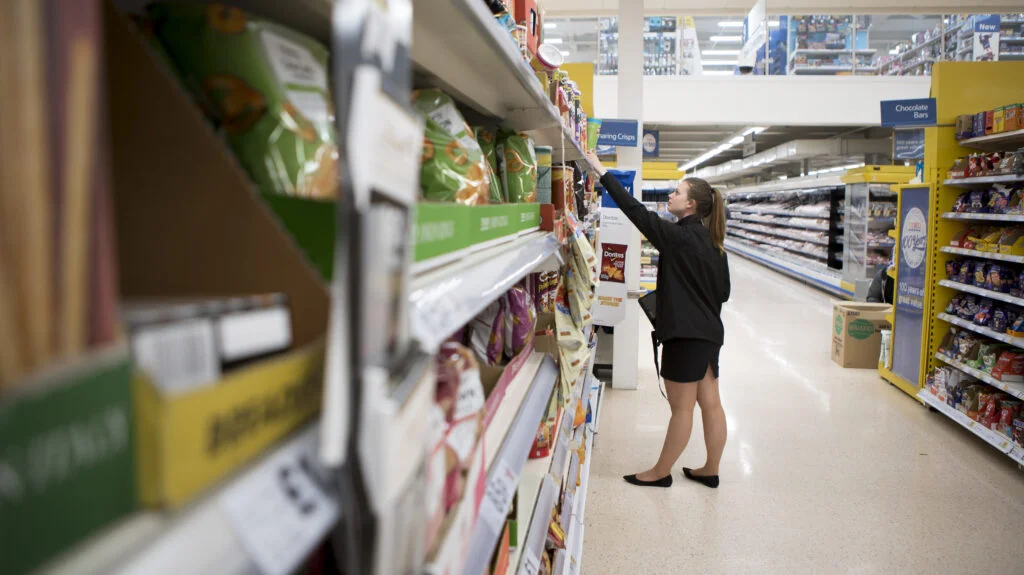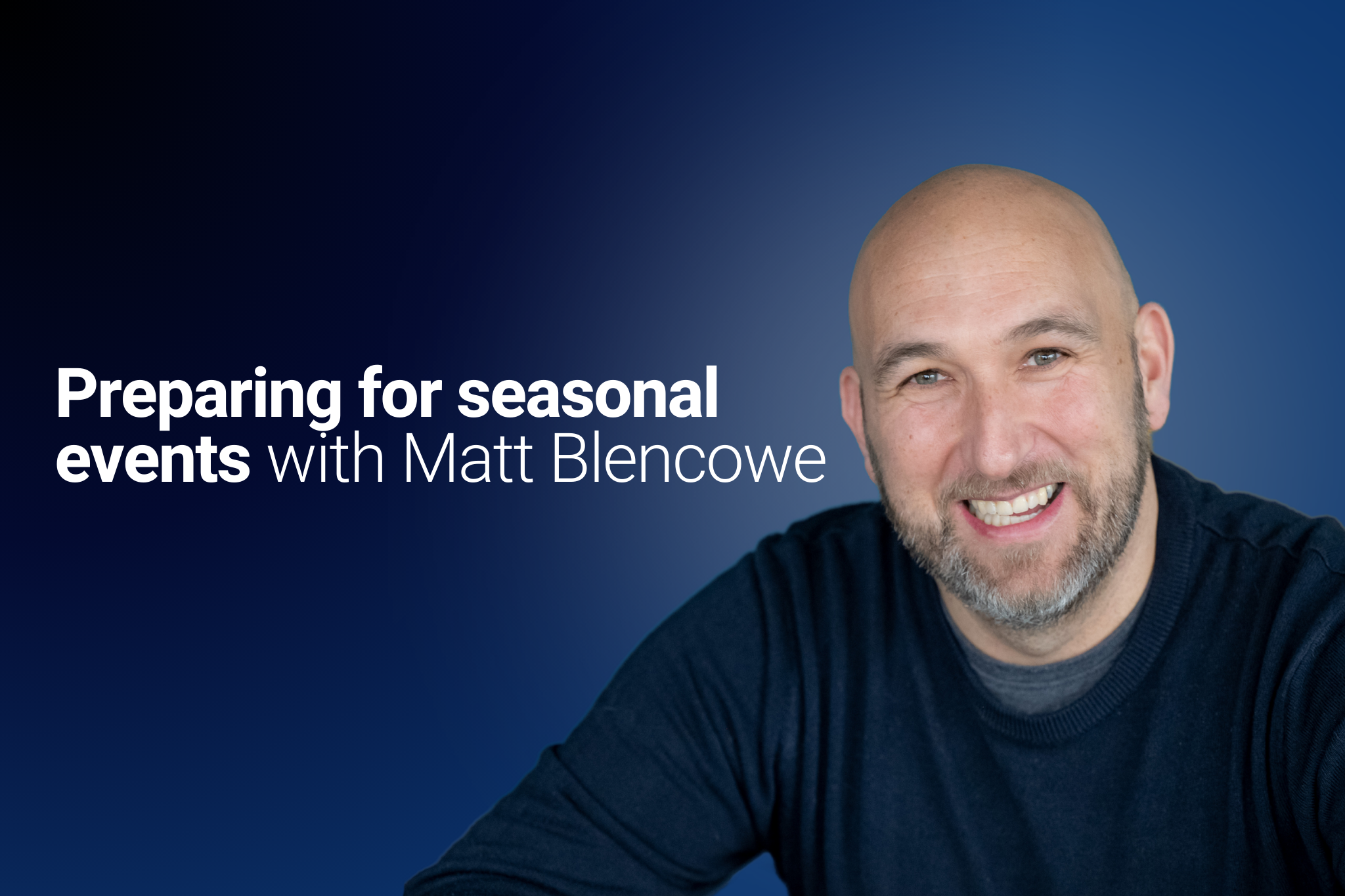We’re officially in the deep end of retails busiest seasonal period of the year, and whilst this time may send a Christmas chill up many businesses’ spine, those who have planned ahead and adapted their strategies to meet the demands of the holiday rush have undoubtedly secured their spot-on Santa’s “nice” list this year.
Seasonal events have many different forms, and they each have the unique power to either make or break your brand. Depending on your business, you may utilise events or promotional offers to help build awareness and increase sales. Many businesses will find that Q4 is the biggest peak for the year as there are many sale periods such as Christmas & black Friday. This is the time where businesses can increase their awareness and gain customer loyalty.

Supporting this, Adobe Experience Cloud predict that the total Season Spend Forecast (between Nov 1st and Dec 31st 2024) is set to reach £25.9 billion pounds this season. This highlights that for many, this is a vital time to lock in consumer buy in. Additionally, this year, Brits are set to spend an average of £362 on gifts – up 10% from last year – and £317 on festive food and drink, up nearly 60%, despite the cost of living crisis. It’s worth noting though that this also reflects inflation and the rising costs of goods.
It’s no surprise that these seasonal periods are responsible for increasing the number of challenges that brands face during this time. Not only do they have to ensure that they’re offering lucrative deals and promotions to secure those all-important sales, but they also have to ensure that their product has optimal share of shelf space with enough product available to avoid the likelihood of stock outs. If these challenges haven’t been solved in the lead up to the key sales period, it’s likely that brands will lose out to other competitors, and they’ll have a hard time shifting their stock which may result in the need for additional discounts and promotions which could result in a significant amount of time and money lost.
To help businesses tackle this challenging period, many are turning to the power of technology to help ease the strain, allowing them to avoid challenges should they arise. Coveo reported that retailers that are “willing to pioneer and experiment with AI-led strategies for delivering exceptional product discovery experiences and the most relevant offers on-the-fly, are poised to thrive this holiday season and into 2025”.
But the question is, how and when should brands get themselves prepared ahead of seasonal events to ensure they’re setting themselves up for success? In this blog, we provide you with helpful insights from Matt Blencowe, our Business Unit Controller who shares his views on where to start!
Q: Hey Matt, thanks so much for your time today. Okay first question…What are the most crucial first steps brands should take when preparing for major seasonal events like Christmas?
A: The first step is starting early—early preparation gives brands a competitive edge in the busy holiday market. Aligning closely with retail partners is essential; this ensures that everyone is on the same page about objectives and timelines, allowing for seamless execution. Securing prime in-store locations should be a top priority because visibility during peak shopping periods can significantly impact sales.
On that, maximising product visibility isn’t just about placement, though. It includes creating eye-catching FSDUs and displays and ensuring that promotions or messaging align with customer expectations and trends. Field marketing teams play a vital role here, as they can hit the ground running by setting up displays, conducting merchandising visits, and ensuring shelves are fully stocked to meet demand.
Stock availability is another critical aspect of holiday planning. Having products in the right place at the right time can make or break a brand’s seasonal success. Brands should collaborate with their supply chain teams to forecast demand accurately, preempt potential shortages, and have contingency plans for replenishment.
Finally, brands should map out the entire in-store customer journey ahead of time. From signage to product placement and even staff interactions, every touchpoint should contribute to a seamless and engaging shopping experience. With the right planning, brands can capitalise on the pre-Christmas shopping rush and make a lasting impression.
Q: How far in advance should brands ideally start planning for seasonal campaigns to ensure smooth execution?
A: Brands should ideally begin planning Christmas campaigns three to six months in advance. This timeline allows enough time to develop strategy, coordinate production and distribution, and finalise in-store execution plans, such as promotional displays and experiences.
Field marketing teams can use this lead time to train staff on promotions, organise displays, and gather visual assets. Early merchandising discussions also help refine strategies and adapt based on customer feedback, ensuring the campaign resonates effectively.
Starting early reduces last-minute stress, improves cohesion, and sets the stage for a successful holiday season.
The demand for products fluctuates throughout the year due to seasonality, impacting some retailers more than others. For certain businesses, seasonal events and holidays are critical to their success, as they depend on these periods to sustain their operations. During peak seasons, demand surges, leading to increased sales, while quieter periods often bring reduced demand and potential dips in profitability.
Retailers affected by seasonality must adopt strategic planning to maximise the benefits of high-demand periods while effectively managing the challenges of slower seasons. This involves exploring ways to boost sales and control costs during quieter times.
Q: How can brands effectively forecast and manage increased demand during peak seasons?
A: Successfully navigating peak seasons, like the Christmas and holiday period, requires a proactive and data-driven approach. Brands should start by analysing past sales data to identify patterns in customer behaviour, peak shopping days, and product demand trends. Layering in insights from current market trends and consumer sentiment can further refine these forecasts. For instance, monitoring social media buzz, competitor activity, and broader economic factors can offer additional context.
Leveraging predictive tools and technologies, such as AI-driven demand planning software, can help brands anticipate shifts in purchasing behaviour and plan accordingly. This ensures not only accurate forecasting but also the agility needed to pivot when unexpected surges or dips occur.
Again, field teams play a critical role during these periods. Their ability to perform real-time merchandising calls allows brands to respond quickly to on-the-ground demand fluctuations. These calls should focus on optimising stock levels, creating visually appealing displays, and ensuring product availability at all times. By staying adaptable and maintaining strong communication between teams, brands can capitalise on peak season opportunities while mitigating the risk of missed sales due to stockouts or poor merchandising.

Q: What role does data analysis play in shaping successful seasonal campaigns, and how can Tactical Solutions assist with this?
A: Data analysis is absolutely crucial in creating impactful seasonal campaigns. It allows brands to identify patterns, respond to real-time challenges, and uncover opportunities to maximise sales during the critical holiday period. At Tactical Solutions, we leverage data from in-store audits and sales tracking to provide actionable insights. This empowers brands to make timely decisions, such as adjusting merchandising strategies, managing stock levels, and optimising display placements to ensure products are prominently showcased.
Our teams use these insights to strategically plan store visits, restock products proactively, and adapt displays to align with shopper behaviour and seasonal trends. With the holiday season often driving higher-than-usual foot traffic, ensuring that shelves are stocked and displays are appealing can make the difference between a customer purchase and a missed opportunity.
Moreover, through our integration with Reapp, we enhance our capabilities by providing even deeper insights into store-level and category performance.
Leveraging the use of Reapp Insight…
During seasonal periods, brands have so many plates to juggle – wouldn’t it be easier to collaborate with a dynamic data software provider who can give you and your teams some much needed assistance? That’s where Reapp comes in!
Reapp empowers retailers and businesses to harness the full potential of data by capturing, analysing, and interpreting vast amounts of retail information—all in real time.
With our web-based platform, Insight, you gain a comprehensive, real-time overview of your operations, enabling swift and confident decision-making. From tracking sales trends and inventory levels to understanding consumer behaviour, Reapp transforms raw data into strategic actions that enhance performance and efficiency. Insight’s powerful features allow you to evaluate product performance year-on-year, month-on-month, or even forecast future outcomes with unparalleled accuracy.
By combining historical data with predictive analytics, Reapp helps you anticipate demand shifts, uncover emerging market opportunities, and make proactive decisions to stay ahead of the competition. This deep level of insight empowers you to optimise inventory, fine-tune field marketing strategies, and elevate operational efficiency—ensuring you’re always ready for what’s next.
Q: How important is the in-store experience for consumers during seasonal shopping, and what strategies can enhance this experience?
A: The in-store experience is crucial during the holidays, as shoppers seek more than just purchases—they want to immerse themselves in the ‘festive’ spirit. To elevate this, focus on creating a warm seasonal ambiance with decorations, holiday music, and well-organised, eye-catching displays. Interactive elements like live demos or festive photo spots make the experience memorable, while knowledgeable, friendly staff play a key role in guiding shoppers and providing recommendations.
Regular merchandising visits are also vital to keep displays fresh, clean, and fully stocked, ensuring customers find what they need and enjoy a seamless, festive shopping journey.
Q: How should brands assess the effectiveness of their seasonal campaigns, and what key metrics should they focus on?
A: Brands can assess their seasonal campaigns in four key ways:
Sales Performance: Field teams can track sales metrics from stores, identifying which locations and tactics are driving the most sales. This provides immediate feedback for quick adjustments during high-traffic periods.
In-Store Engagement: By observing foot traffic and dwell time around displays, field teams can measure customer interactions and conversion rates, helping brands understand the effectiveness of their in-store experience.
Stock Turnover and Inventory Levels: Field teams monitor product turnover, ensuring shelves stay stocked with popular items and preventing out-of-stocks. This real-time information helps align inventory with demand.
Display Effectiveness: Field teams assess customer reactions and sales lift from displays, providing insights into which placements and setups yield the best results, and allowing brands to optimise future displays.
It’s clear that in order to achieve success during seasonal periods, a significant amount of preparation is needed both prior to the occasion and even after when reflection on performance to take note for upcoming peak periods. If brands master these strategies, utilising the use of data and technology to improve their processes, then they can reach their revenue goals and scale themselves to greater heights, enhancing operational efficiency.
At Tactical Solutions, we’re dedicated to empowering brands to succeed during peak seasons and beyond. By combining our expertise with Reapp, we provide a comprehensive solution to optimise every aspect of your retail strategy—from merchandising to real-time insights.
Ready to transform your seasonal campaigns into standout successes? Contact us today to discover how we can support your brand in achieving its full potential!




